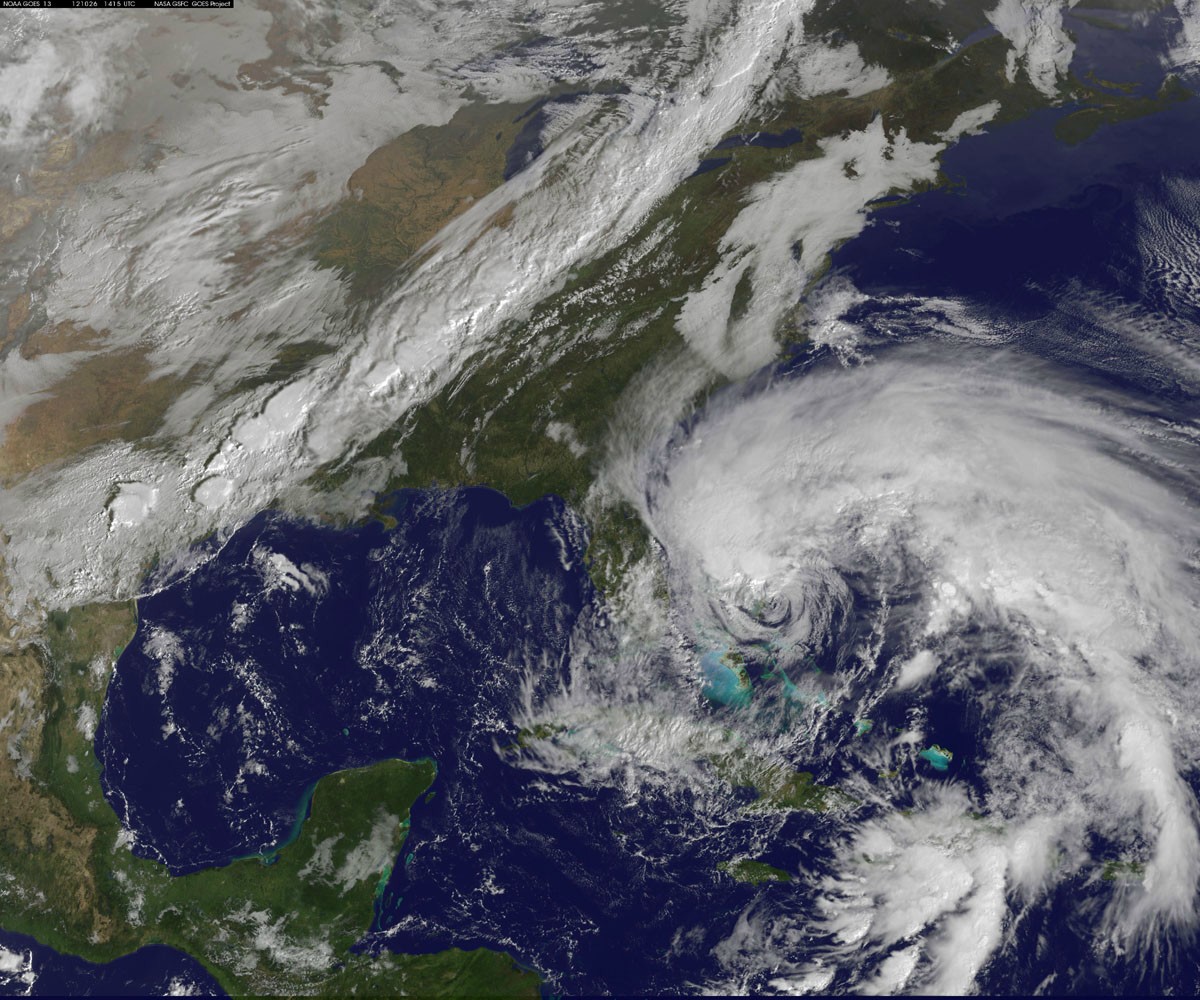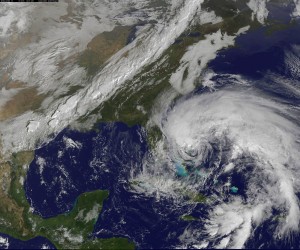
“Frankenstorm” or “S’noreasticane” threatens Washington and New York
 As we prepare for the weekend here in the Washington, DC area, most of us will go home and begin to try to protect our homes from storm damage and flooding. We’ll all stock up on batteries and fresh water. I’ll bet that my local Safeway is out of milk already.
As we prepare for the weekend here in the Washington, DC area, most of us will go home and begin to try to protect our homes from storm damage and flooding. We’ll all stock up on batteries and fresh water. I’ll bet that my local Safeway is out of milk already.
But, this is not our usual preparation for 2 inches of snow (yes – DC doesn’t deal well with the snow). Instead, this is to prepare for the coming combination Hurricane Sandy with a winter storm from Canada in the pattern of a winter ‘Noreaster’ that could bring snow in the mountains. Hence, S’noreasticane (Snow+Noreaster+Hurricane). This is not a normal occurrence. In fact, this confluence is being called a historically dangerous storm, and is being compared to the ‘perfect storm’ of 1991 (without Mark Wahlberg or George Clooney).
Hurricane Sandy, fresh off its pummeling of Cuba and Jamaica (where it killed 29 people) has turned towards the American East Coast. Well – that’s not quite accurate: it is following a track that would normally drive it out to sea, but instead it is predicted to take a hard left turn after it passes Cape Hatteras and dive directly into the East Coast, between Norfolk, VA and Providence, RI, sometime Monday or Tuesday.
Andrew Freedman over at Climate Central is doing great work showing where the storm is, what it is doing, and what forces are driving it. The kicker of his post, “Historic ‘Frankenstorm’ Aimed At Mid-Atlantic, Northeast” is that there may be a link between ice melt in the Arctic (recall, this year saw a record low of ice) and weather patterns like this. Read the whole post for way more detail and technical understanding of these weather patterns than I could give.
While policymakers and reporters are often cautioned that no single event can be attributed to man-made climate change, that may no longer be the case. The study released by NASA Scientist James Hanson’s in August of this year makes a compelling case that there is a “climate change fingerprint” on recent extreme weather events.
Simply to say that we’ve always had hurricanes is not the point. We’ve actually never had a storm with this track before.
The truth is that in 2011, 1,100 Americans died in extreme weather and more than 8,800 others were injured, while weather-related damages in the United States totaled nearly $24 billion. We should probably expect far worse as we move further into the unknown extremes.
Ironically, next week, ASP is releasing its new “Climate Security Report” with an event on Thursday morning. You can find more details here (come!). Without spoiling the surprise, I can say that we find that climate change presents clear threats to American national security because it could act as an “accelerant of instability” around the world. More relevant to the coming of Frankenstorm Sandy, however, is our finding that climate change threatens America’s homeland security. A storm of this size threatening to do billions of dollars worth of damage to infrastructure and property is as clear a threat to security as you can get.
Because the climate is changing so rapidly, the effects of sudden changes are unknown. We can venture predictions, but what it will do to storms, drought, ice sheet melting, or disease are largely unknown. As we venture into this unknown territory, we will see more surprises like this Halloween storm – it is difficult to predict future events based on past climate behavior – we are entering uncharted territory.






Greetings I am so glad I found your site, I really found you
by error, while I was searching on Bing for something else, Anyhow I am here now and would just like to say many thanks for
a marvelous post and a all round thrilling blog (I also love the theme/design),
I dont have time to read through it all at
the moment but I have book-marked it and also added in your
RSS feeds, so when I have time I will be back to read a
lot more, Please do keep up the fantastic work.
[…] Holland: “Frankenstorm” or “S’noreasticane” threatens Washington and New York […]
[…] Holland: “Frankenstorm” or “S’noreasticane” threatens Washington and New York […]
[…] which blocked the hurricane from staying safely out at sea. The lesson is that climate change is increasing America’s vulnerability to extreme […]
[…] at the immediate costs from Hurricane Sandy. Climate change made the destruction of Hurricane Sandy much worse. I noted the costs to lives, infrastructure and lost economic […]